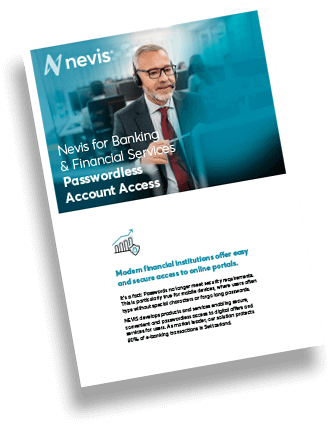
A virtual wallet is an account that allows you to make transfers and store your money without visiting a bank branch. It is possible to open an account remotely from your computer. PNC offers bonuses to their Virtual Wallet (r) Product. These include a $200 bonus on eligible direct deposits. To qualify for the bonus, you must have a minimum of five thousand dollars in direct deposits.
Interest rates
PNC Virtual Wallet offers a range of interest rates. Rates can vary depending on what type of checking account they are. Savings accounts, for example, earn 0.01% APY, while Premier Money Market accounts earn 0.50% APY. The interest rate you earn will depend on the amount of money that you deposit into your Virtual Wallet account.
You must have a minimum balance of $2,000 to qualify for the lowest interest rate. For you to be eligible, you will need at least 15 thousand dollars in your other PNC Bank accounts. Virtual Wallet can earn you interest if you have over a couple thousand dollars in other accounts.
Monthly service fee
PNC Virtual Wallet offers a low monthly service charge and a checking account. This account allows you to access your bank online and has a low monthly service fee. If you are enrolled in school, there is no minimum deposit. The account comes with three types of accounts: a primary account, an interest bearing checking account, and long-term savings. It features an interactive mobile app and online articles to help with your finances.

PNC Virtual Wallet account holders have double-layer protection against overdrafts. When they're in danger of overdraft, PNC automatically transfers money from their Reserve and Growth accounts. This automatic transfer is free and does not require additional setup. This protection also prevents you paying overdraft fees if your overdraft exceeds $5. Another perk is that the PNC Virtual Wallet account also offers the option of setting up recurring direct deposits.
Bonus offer
With a PNC Virtual wallet, you will earn 4x points on every dollar you spend. This bonus is available nationwide, and you don't have to make any debit purchases to earn the points. The bonus also has an expiration date. The offer is only valid when the account balance is less than $2,000, or $5,000. There are certain restrictions. One bonus can be claimed per calendar year.
To receive the bonus, open a PNC virtual account and make a qualifying bank transfer. This includes any recurring or electronic deposits you receive from your employer. Your eligible account will receive the bonus amount within 60-90 business days.
Reimbursement from ATM fees
PNC Virtual Wallet account holder have the opportunity to enjoy free ATM fee reimbursements for up two transactions per calendar month. The state in which you live will affect the reimbursement. Depending on which ATM you use, the first two transactions can cost $5 to $20. PNC Virtual Wallet account offers competitive interest rates. For instance, the Growth savings accounts offer 0.40% interest rate.
PNC Virtual Wallet customers may also be eligible for a performance checking account which pays 0.01percent APY when they have $2,000 or more in balance. The performance spend account allows for more fee forgiveness that the basic checking account. You can also get up to four non-PNC ATM transactions reimbursed per statement period.

Overdraft protection
PNC Virtual Wallet users have new options to avoid overdraft fees with Low Cash Mode, a digital service that lets them control how debits are processed. Low Cash Mode provides a 24-hour grace period and alerts when a balance falls below a specified threshold. This feature is free for Virtual Wallet customers.
Virtual Wallet can link automatically to your PNC Reserve Savings account and PNC Spend accounts to prevent overdrafts. PNC has a strong Overdraft Protection policy that reimburses overdraft fees if the spending exceeds the checking balance. If your balance is less than five dollars, you will be reimbursed by the company.
FAQ
What investments should a beginner invest in?
Investors who are just starting out should invest in their own capital. They should also learn how to effectively manage money. Learn how to prepare for retirement. How to budget. Learn how to research stocks. Learn how to interpret financial statements. Learn how to avoid falling for scams. How to make informed decisions Learn how you can diversify. Learn how to protect against inflation. How to live within one's means. Learn how to save money. Learn how to have fun while doing all this. You will be amazed at the results you can achieve if you take control your finances.
Which type of investment vehicle should you use?
Two options exist when it is time to invest: stocks and bonds.
Stocks represent ownership interests in companies. They offer higher returns than bonds, which pay out interest monthly rather than annually.
You should invest in stocks if your goal is to quickly accumulate wealth.
Bonds, meanwhile, tend to provide lower yields but are safer investments.
You should also keep in mind that other types of investments exist.
These include real estate, precious metals and art, as well as collectibles and private businesses.
Can I make a 401k investment?
401Ks offer great opportunities for investment. Unfortunately, not all people have access to 401Ks.
Employers offer employees two options: put the money in a traditional IRA, or leave it in company plan.
This means that you can only invest what your employer matches.
Taxes and penalties will be imposed on those who take out loans early.
Statistics
- 0.25% management fee $0 $500 Free career counseling plus loan discounts with a qualifying deposit Up to 1 year of free management with a qualifying deposit Get a $50 customer bonus when you fund your first taxable Investment Account (nerdwallet.com)
- As a general rule of thumb, you want to aim to invest a total of 10% to 15% of your income each year for retirement — your employer match counts toward that goal. (nerdwallet.com)
- An important note to remember is that a bond may only net you a 3% return on your money over multiple years. (ruleoneinvesting.com)
- If your stock drops 10% below its purchase price, you have the opportunity to sell that stock to someone else and still retain 90% of your risk capital. (investopedia.com)
External Links
How To
How to properly save money for retirement
Retirement planning involves planning your finances in order to be able to live comfortably after the end of your working life. This is when you decide how much money you will have saved by retirement age (usually 65). It is also important to consider how much you will spend on retirement. This includes things like travel, hobbies, and health care costs.
You don't always have to do all the work. A variety of financial professionals can help you decide which type of savings strategy is right for you. They'll look at your current situation, goals, and any unique circumstances that may affect your ability to reach those goals.
There are two main types: Roth and traditional retirement plans. Roth plans allow you to set aside pre-tax dollars while traditional retirement plans use pretax dollars. You can choose to pay higher taxes now or lower later.
Traditional retirement plans
A traditional IRA allows pretax income to be contributed to the plan. You can contribute if you're under 50 years of age until you reach 59 1/2. You can withdraw funds after that if you wish to continue contributing. After turning 70 1/2, the account is closed to you.
You might be eligible for a retirement pension if you have already begun saving. These pensions can vary depending on your location. Employers may offer matching programs which match employee contributions dollar-for-dollar. Some offer defined benefits plans that guarantee monthly payments.
Roth Retirement Plans
Roth IRAs have no taxes. This means that you must pay taxes first before you deposit money. When you reach retirement age, you are able to withdraw earnings tax-free. There are restrictions. You cannot withdraw funds for medical expenses.
Another type of retirement plan is called a 401(k) plan. These benefits may be available through payroll deductions. Additional benefits, such as employer match programs, are common for employees.
401(k), plans
Most employers offer 401k plan options. You can put money in an account managed by your company with them. Your employer will automatically pay a percentage from each paycheck.
You can choose how your money gets distributed at retirement. Your money grows over time. Many people prefer to take their entire sum at once. Others may spread their distributions over their life.
There are other types of savings accounts
Some companies offer different types of savings account. TD Ameritrade has a ShareBuilder Account. With this account, you can invest in stocks, ETFs, mutual funds, and more. You can also earn interest for all balances.
Ally Bank offers a MySavings Account. This account allows you to deposit cash, checks and debit cards as well as credit cards. You can also transfer money from one account to another or add funds from outside.
What's Next
Once you have decided which savings plan is best for you, you can start investing. Find a reliable investment firm first. Ask your family and friends to share their experiences with them. For more information about companies, you can also check out online reviews.
Next, figure out how much money to save. This step involves determining your net worth. Net worth refers to assets such as your house, investments, and retirement funds. Net worth also includes liabilities such as loans owed to lenders.
Once you have a rough idea of your net worth, multiply it by 25. This is how much you must save each month to achieve your goal.
For instance, if you have $100,000 in net worth and want to retire at 65 when you are 65, you need to save $4,000 per year.